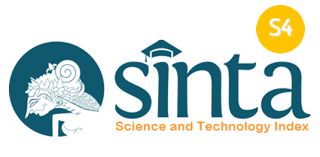Anthropomorphism in Upin dan Ipin: A Study of Children’s Literature
Abstract
This study discusses the use of anthropomorphism in two episodes of Upin and Ipin entitled Aku Sebatang Pensel and Aku Sebuah Jam. Through observation and note-taking techniques, data were obtained to analyze how the two episodes humanize pencils and clocks. The results of the analysis show the presence of anthropomorphic elements in both episodes, including human characters, emotions, and human behavior given to pencils and clocks. The pencils in the episode Aku Sebatang Pensel behave like humans with the ability to speak, interact, and show emotions such as worry, anger, pride, sadness, and joy. Meanwhile, the clock characters in the episode Aku Sebuah Jam also show human behavior with the ability to speak, share experiences, show concern, and dance. Sad emotions are also displayed by the clock characters. The characteristics of pencil and clock characters include helpful, encouraging, caring, argumentative, passionate, optimistic, cheerful, curious, obedient, and expressive. This study uncovers the use of anthropomorphism in Upin and Ipin animations, shedding light on its contribution to children's imagination, understanding of complex issues, and story appeal. Through this technique, young audiences can connect with the characters and develop empathy. The findings are relevant for the development of children's films and learning media, as an effective strategy to convey moral values. The study also encourages animation and creative producers to produce creative and diverse content, in line with the demands of complex audiences.
References
Airenti, G. (2018). The development of anthropomorphism in interaction: Intersubjectivity, imagination, and theory of mind. Frontiers in Psychology, 9, 2136.
Bruni, D., Perconti, P., & Plebe, A. (2018). Anti-anthropomorphism and its limits. Frontiers in Psychology, 9, 2205.
Chen, S. (2018). Anthropomorphic animals in children’s literature. Journal of Children’s Literature, 44(2), 65–78.
Hafi, I. Y. (2020). Mengembangkan Kepribadian Anak Melalui Sastra Anak (Dongeng). PENAOQ: Jurnal Sastra, Budaya Dan Pariwisata, 1(1), 63–68.
Katz-Buonincontro, J., & Anderson, R. C. (2020). A review of articles using observation methods to study creativity in education (1980--2018). The Journal of Creative Behavior, 54(3), 508–524.
Latifah, N., Munajah, R., & Hasanah, U. (2010). PENGANTAR SASTRA ANAK. Universitas Trilogi.
Marsyaulina, A. (2018). Antropomorfisme Pada Gotouchi-Kyara Funasshi. Universitas Indonesia.
Moleong, L. J. (2021). Metodologi penelitian kualitatif. PT Remaja Rosdakarya.
Murakami, T. (2015). Anthropomorphism as a communicative strategy in advertising: The effect of using human-like animals on product and brand evaluations. Journal of Advertising, 44(1), 37–46.
Nurgiantoro, B. (2021). Sastra anak: pengantar pemahaman dunia anak. Ugm Press.
Sugiono. (2017). Memahami Penelitian Kuantitatif, Kualitatif, Dan R & D. Jakarta: Alfabeta.
Toha-Sarumpaet, R. K. (2010). Pedoman penelitian sastra anak. Yayasan Pustaka Obor Indonesia.
You, C. (2021). The necessity of an anthropomorphic approach to children’s literature. Children’s Literature in Education, 52(2), 183–199.
Copyright (c) 2023 Qori Islami Aris, Essy Syam

This work is licensed under a Creative Commons Attribution 4.0 International License.













